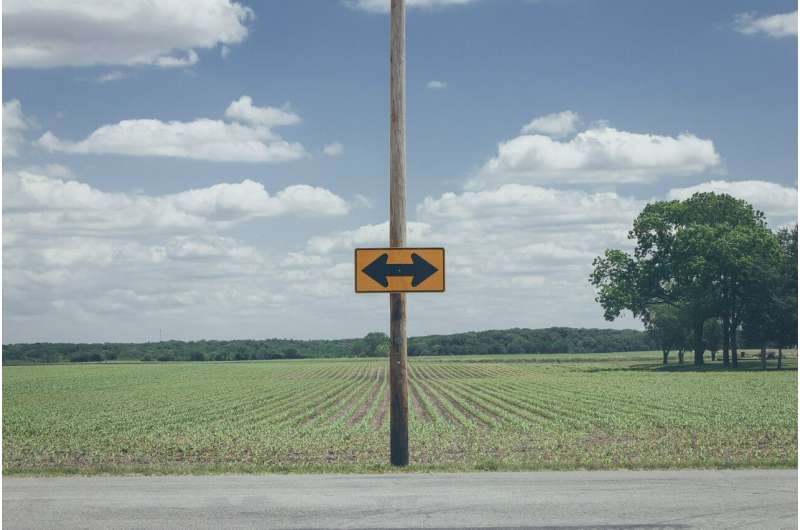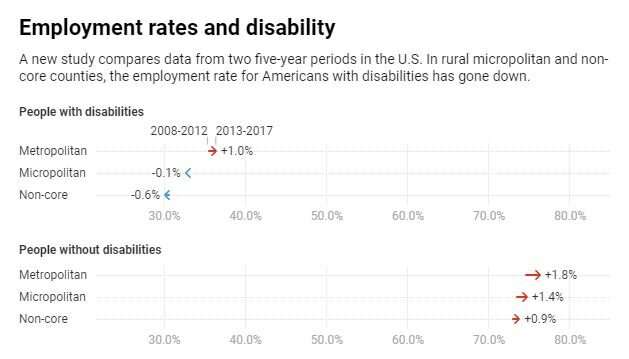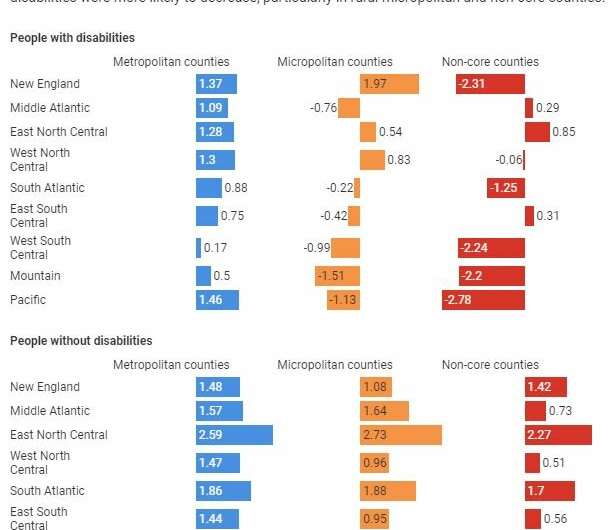Rural people with disabilities are still struggling to recover from the recession

After the devastating losses of the Great Recession, the U.S. has enjoyed one of the longest expansions in its recorded history. For nearly 100 straight months, the U.S. economy has added jobs.
But not all groups have shared equally in the recovery. African-Americans and people in rural communities have been particularly slow to recover, compared to their white and urban peers.
Our team at the University of Montana's Research and Training Center on Disability in Rural Communities published a new analysis on Jan. 10. Our research shows that people with disabilities, particularly those in rural areas, have also experienced a longer, deeper recession and a much slower recovery.
In December, the U.S. Census released new American Community Survey data, aggregating data from the years 2013 to 2017, for public use. Comparing these new data with summary data from 2008 to 2012 gave us the opportunity to see how employment rates have changed over time for rural people with disabilities in the context of changing economic conditions. We considered people across disability type, including sensory, physical and mental disabilities.
For the U.S. as a whole, rates of employment increased across those two five-year study periods for people with and without disabilities. However, people without disabilities increased by 1.7 percentage points, while those with disabilities increaseed by just 0.8.

What's more, people with disabilities are already much less employed than people without disabilities. We found that this difference is widening over time.
When it came to looking at rural and urban areas, the results from our analysis were bleak. We define rural and urban following the Office of Management and Budget's metropolitan classification. Urban counties are defined as being part of a metropolitan area of 50,000 or more people. Rural counties are defined as micropolitan – where the largest town has 10,000 to 49,999 people – or non-core, if they only have towns of less than 10,000 people.
While urban counties reveal employment gains across the board, rural counties experienced significant declines in employment for people with disabilities. Between each five-year period in metropolitan counties, the most urban areas, employment for people with disabilities increased by 1.01 percentage points. However, rates decreased in rural counties.
Rates varied significantly for different parts of the country. While people without disabilities experienced positive rate changes across nearly all U.S. Census divisions, people with disabilities living in rural counties did not.

In fact, employment decreased for rural people with disabilities in over half of the U.S. divisions, with rates in the most rural counties dropping by more than 2 percentage points in the New England, West South Central, Mountain and Pacific divisions.
These results clearly indicate that people with disabilities in rural areas are being left behind. Rural people with disabilities already experience high poverty rates, less access to health care and specialty services, and other barriers that prevent them from participating in their communities. Depressed employment rates can have dire consequences for this group.
These lower rates lead to less access to health insurance, retirement benefits and other financial resources, which all threaten to further marginalize people with disabilities in rural communities.
Provided by The Conversation
This article is republished from The Conversation under a Creative Commons license. Read the original article.![]()


















